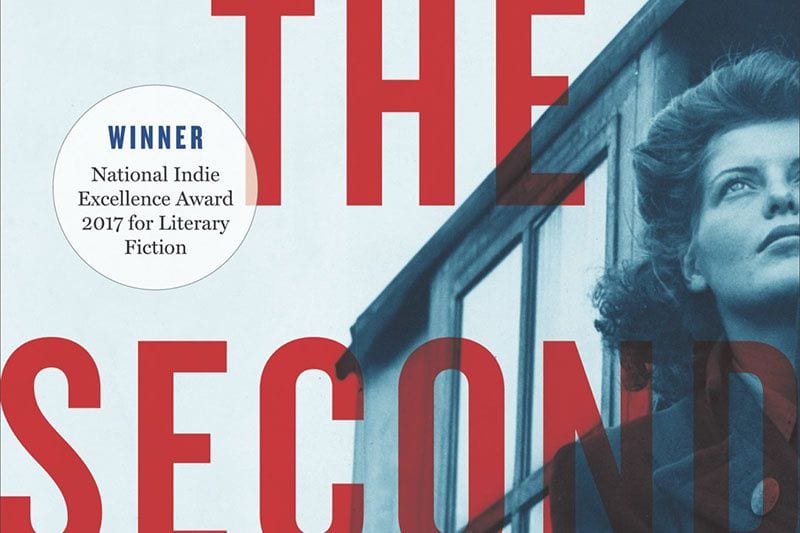
Author Craig Larsen uses Leo Tolstoy’s famous line, “all happy families are alike; each unhappy family is unhappy in its own way” (300) as an apt subtext for The Second Winter. The novel is a multigenerational saga centered on the Gregersen family. Using War World II as the backdrop, Larsen’s characters try to overcome learned dysfunction, abuse, and violence. The text spans multiple genres including historical fiction, family saga, and noir thriller to create a readable page turner. Bronze winner of the 2016 Indies and earning an honorable mention from the 2017 San Francisco Book Festival, The Second Winter illuminates the horrors devised by humanity.
Set in Nazi occupied Denmark, the novel centers on the character Fredrik Gregersen, a violent and unstable caretaker of a derelict farm. He is an emotionally bereft father and struggles to financially provide for his son, Oskar, and daughter, Amalia. Through Larsen’s engaging storytelling, readers learn that Fredrik has shown violent and criminal tendencies his entire life. As a result he was excommunicated from his family of origin. He is brutish, tormented, and sees no moral boundaries when self-preservation is at stake. For example, he capitalizes on the Jewish fugitives he agrees to smuggle into Sweden. Here Fredrik’s true greed and pathology are revealed when he robs the family and rapes their daughter. Frederik’s parasitic lifestyle, lack of empathy, and violent tendencies cast him as an archetypal psychopath. Larsen develops Fredrik’s character to show vulnerability. But after the aforementioned scene with the Jewish family, it was too late for my sympathies. Fredrik is an absolute villain.
The Second Winter‘s strength is a poignant examination of a family’s saga. Fredrik’s abusive tendencies force his children to become wholly docile. Yet Fredrik understands their obedience as a way to cull the money he needs to feed his alcoholism, drug addiction, and frequent brothel visits. Amalia sacrifices her wellbeing to tend to Fredrik while Oskar desperately wants to connect with his father. Larsen uses Oskar’s emotional need to implicitly demonstrate the longstanding abuse and negligence the children endure. Oskar is an interesting anti-hero. As he succumbs to his father’s abuse and dysfunction, readers desperately wish for Oskar’s redemption. Unlike his father, Oskar’s depravity is learned from witnessing Fredrik’s violence.
Despite showing qualities of the historical fiction genre, The Second Winter closely recalls noir fiction tropes. Several of Larsen’s characters exemplify the outsider trope. In fact, each character typifies a degree of ostracization or alienation. Essentially Oskar’s severed relationship with his father and Frederik’s excommunication represent the disconnection. As the noir genre indicates these outsiders are not heroes in anyway. They are driven by greed, violence and they commit deeply unsettling acts of sexual and physical violence – another trope of the genre in its own right. Finally, The Second Winter often depicts the snow covered city streets of Copenhagen thereby rendering an unsettling quietude. This aligns with the typical noir setting and tone while further demarcating the characters’ isolation.
The Second Winter narrative is disjointed and the connections between characters doesn’t always flow. More so it was difficult to keep track of the secondary characters due to the unconnected narrative. For example Oskar travels to the Gregerson estate, meets his cousins, and then flees the next morning. Readers are never reintroduced to these new characters. Oskar’s visit is meant to show familial reconnection but this type of character development is convoluted by adding too many secondary and tertiary characters.
At times the violence and sex felt gratuitous and failed to further the plot or any of the characters. In one scene, Amalia, a housemaid, is tasked with taking care of her employer’s children. She bathes the daughter, Christine, who starts masturbating in the tub. While Amalia attempts to stop Christine, her brother enters the bathroom and “a shadow darkened his eyes.” (133). Nothing comes from this scene and readers never encounter these children again. Additionally the attempted and actualized rape scenes were numerous and appalling. The character Polina, a young Polish Jew forced into prostitution by the Germans and Danes, is nothing more than a rape trope. She is mercilessly violated so often that enduring sexual assault becomes her norm. It’s unnecessary for Larsen to subject his female characters to sexual violence, especially if the only point is to establish his male characters. We got it, the characters are depraved! Readers understand that the male characters struggle with beastile tendencies. Larsen is a talented writer, for sure, so he has every other narrative device at his disposal. Overusing sexual violence, however, is completely unnecessary.
Without question The Second Winter‘s literary gift to readers is its examination of the family structure and the transference of dysfunction between fathers and sons. However the novel’s foundation on graphic descriptions of sexual, emotional, and physical violence might prove too realistic for some readers and completely unnecessary to others. Yet Larsen is a savvy writer and The Second Winter is an engaging read featuring characters you’ll love to hate.

